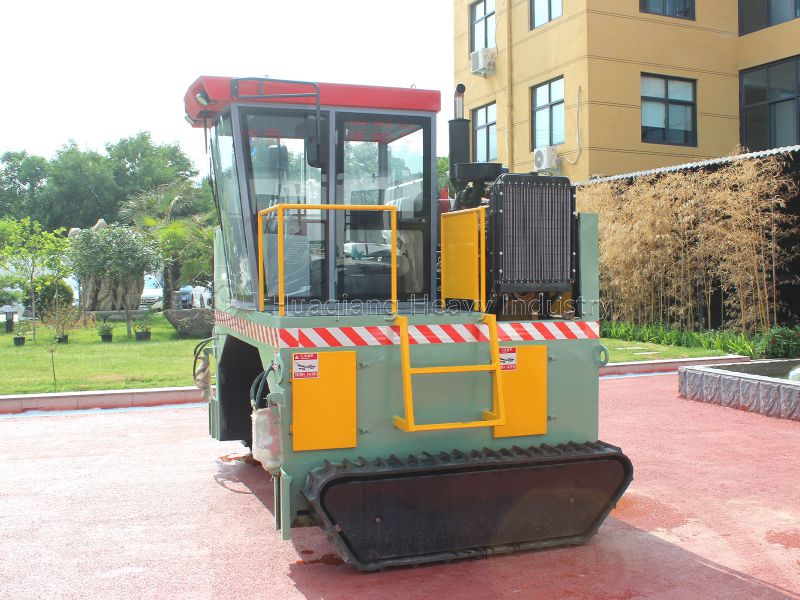Requirements for the windrow compost turning machine’s working site
The windrow compost turning machine is a core piece of equipment in organic fertilizer production. It’s mainly used for turning compost piles during fermentation to promote oxygen exchange, moisture adjustment, and even decomposition.
For stable operation and efficient production, proper planning of the working site is essential.
1.Basic Site Requirements
Ground Flatness: The turner needs firm, level ground to run on. Uneven surfaces can cause the machine to tilt or damage its tracks.
Ground Load-Bearing Capacity: Since windrow compost turning machines are heavy (usually 5-10 tons), the site must support their weight to prevent ground sinking.
Drainage System: The fermentation area needs good drainage to avoid pooling rainwater or seepage, which can affect composting.

2.Site Size and Layout
Fermentation Trough Width: Turners are typically suited for troughs 3-6 meters wide. The machine’s turning width should match the trough width to ensure full coverage.
Pile Height: Keep material piles between 1.2 and 1.8 meters high. Piles that are too high hinder turning, while piles too low reduce efficiency.
Working Paths: Leave enough space for the machine to turn and move in or out. Tight spaces can make operation difficult.
3.Environment and Supporting Facilities
Ventilation: Good airflow in the fermentation area is crucial for aerobic composting and preventing harmful gas buildup.
Rain Protection: For outdoor sites, installing a rain shelter is recommended. This stops rain from soaking the material and disrupting the fermentation process.
In short, choosing a suitable site is key to letting the windrow compost turning machine bring out its best performance.
